The twisting roads of the European Alps in winter offer memorable views of snow-capped peaks and soaring pines. Come summer, cattle graze on verdant meadows filled with colourful wildflowers. But thousands of miles away in the Andes of north-west Argentina the mountains couldn’t be more different in the middle of a Southern Hemisphere spring.
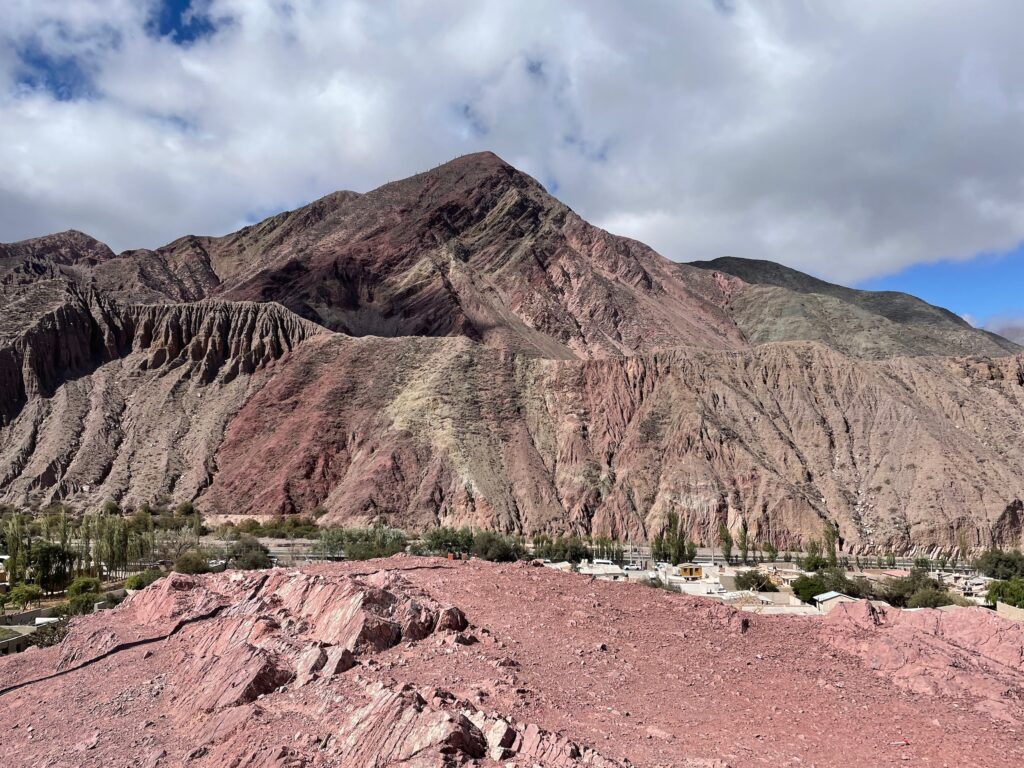
This is an arid, tough landscape. Scouring winds face little resistance. The sun burns fiercely. But despite these challenges, plants, animals and people somehow cling on. Above the treeline in particular is an extraordinary mountainscape of colourful minerals and fascinating rock formations. Bleak, yes, but over millennia the churning of the earth’s surface and the eroding effects of wind and precipitation have created one of the most memorable of mountain ranges.
A trip to the vast salt flats of Argentina’s Salinas Grandes high up in the Andes, and which are so large they span the provinces of Jujuy and Salta, is a must if you’re ever in the region. And it’s one of those occasions where the journey is as important and as memorable as the destination. I’ve even forgiven the tour company we used for reneging on the deal to provide us with a multi-lingual guide.
The tour proved to be a 12-hour, 500km epic in a cramped coach, involving an early start from our hotel in the western city of Salta. Admittedly the first hour or two, along the main 9 and 34 highways, offers little of interest. The roads are potholed and all too often lined with plastic waste and other rubbish, a familiar and depressing sight that’s not unique to this part of the world. Some towns, such as General Guemes, lack charm (being polite about it) but this is the real Argentina, the one that hasn’t been airbrushed for tourists. En route we stopped at a remote services for loo visits and the purchase of supplies but what little had been spent on the place had gone into the inevitable shop rather than the toilets, which were half built and so rough they made me gag.

On the climb towards the mountain village of Purmamarca, which stands at about 2,300m above sea level, the Andes truly come into their own and I defy anyone not to be transfixed by the views. This is a good thing because the road is winding and nerve-wracking at times, partly because of the recklessness of many Argentinean drivers but also because of the inevitable sheer drops just yards from the edge of the carriageway.
The road follows the dry bed of the Rio Grande, a river that only flows after the wet months of summer, and we’re now in the broader Quebrada de Humahuaca UNESCO World Heritage Site. Amid the desert farmers manage to cultivate modest plots, just as their ancestors did in centuries past, their green crops surviving amid the dust and scree of the mountains. Plump giant cacti, straight out of the Wild West, stand to attention across the slopes and numerous grasses cling to the rocks, many similar to the ornamental varieties in my garden back in England. Wild vicuñas scatter as vehicles approach but groups of domesticated llamas graze on what vegetation has survived the dry season.
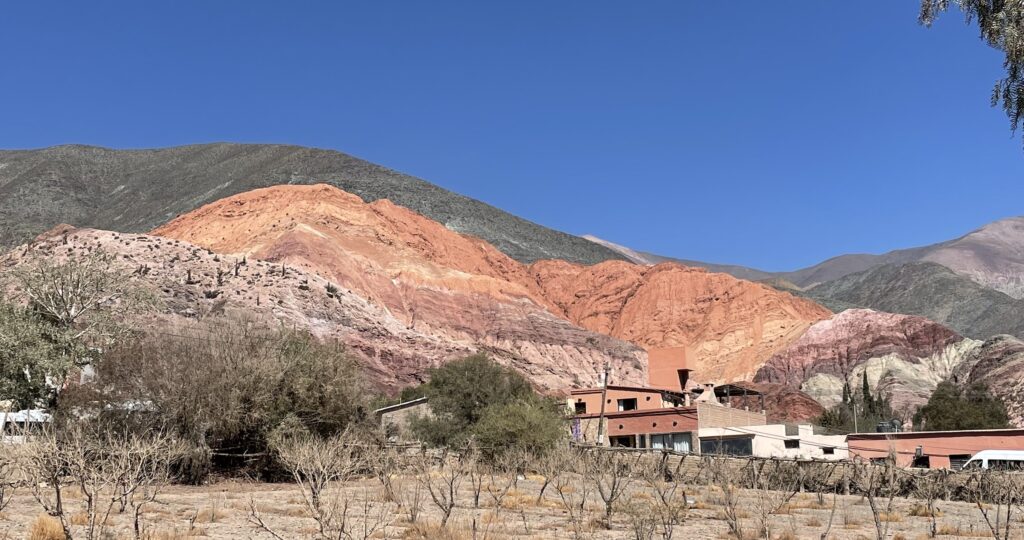
Tour buses stop outside Purmamarca at the Cerro de los Siete Colores (The Hill of Seven Colours), a fascinating formation of multiple rock types that stands like a geological rainbow. There are reds and blues, yellows, greens and more, laid down over millions of years. The colours are seen throughout the drive but never together in such a dramatic way.
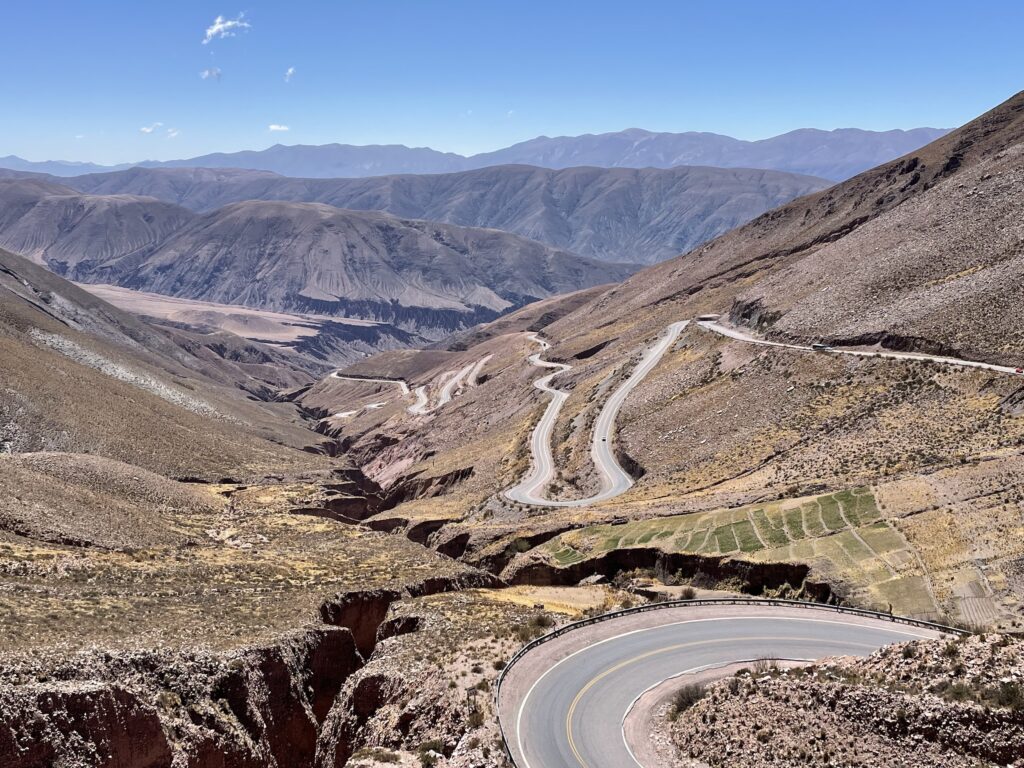
The highest point of the trip is the Altos del Morado pass at a mind-boggling 4,170 metres. This is an altitude that should’ve had us all feeling rough with sickness, especially me suffering from the inevitable holiday cold, but our guide helped clear our sinuses for maximum oxygen intake with Agua de Florida, a powerful concoction of alcohol and natural oils. And he’d given us coca leaves, an ancient Inca and Andean treatment for altitude health problems. We rolled them up and stuffed them between jaw and cheek and hoped for the best. Perhaps the combination did help because I felt pretty much fine.
The vast salt flats known as Salinas Grandes gradually come into view, first as a shimmering white slash across the landscape below a deep blue sky. Soon they are all around us and as far as the eye can see, with just the mountains of Chile beyond as punctuation. The sight is dazzling and sunglasses are essential.
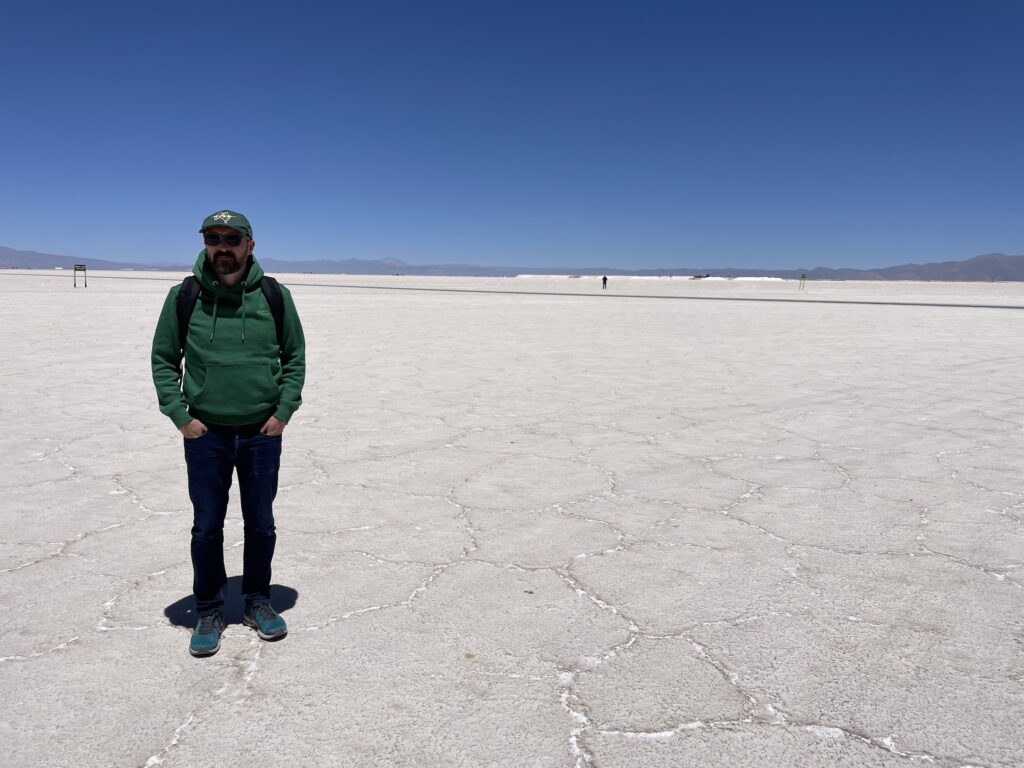
The flats measure something like 80 square miles and are what remain of an epic lake that dried up long ago, although it gets refreshed to an extent by summer rains. The ground, which is easy to mistake for snow and ice, isn’t flat as such but composed of numerous rough polygonal shapes jammed together. A road carves its way across them into the distance and countless visitors pose for photos that distort perspective.
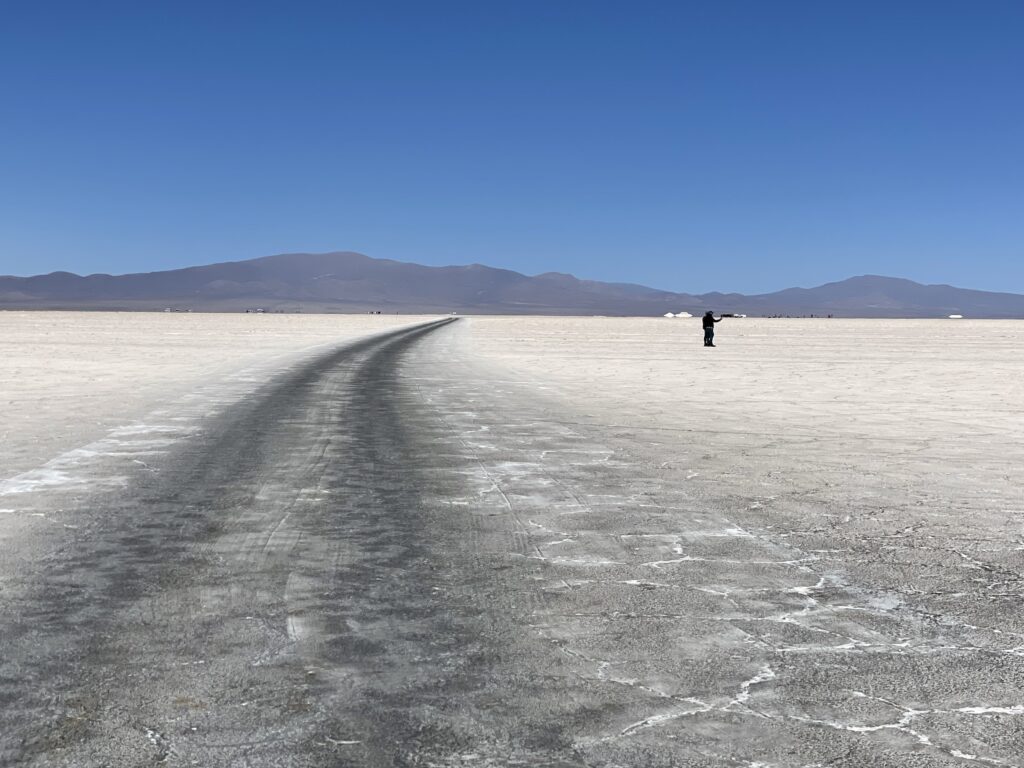
The tourist operation is reasonably sophisticated considering we’re at something like 3,500m above sea level and in the middle of nowhere. Staff take a modest entrance fee and offer to snap photos. The few buildings around, a couple of statues and a row of market stalls are made of salt bricks cut from the lake. Mining is big here too, for salt (obviously) and lithium (less obviously). Diggers carve out slabs of thick white salt in the distance and mountains of the stuff stands ready to be exported.
We hung around for half an hour or so taking pictures, only too aware of the strength of the sun, before getting back on the coach for the return journey that included a stop for lunch back at Purmamarca, a dusty, windy village that’s given itself over to the tourist dollar in a big way. We ate llama (imagine the taste of pork) and climbed to a viewpoint that was so windswept I feared being blown into neighbouring Chile. There are some wonderful old adobe buildings to admire and the white-painted church and cabildo building on the central square are truly photogenic.

There’s a handicrafts market on steroids in the square too, some of it tat but much of it very good. Jumpers, ponchos, scarfs and mats made from llama, alpaca and other materials are particularly good value and we came home with a colourful blanket perfect for cold winter nights back home.
Exhaustion had set in by the time we boarded the coach for the final leg of our journey, leaving behind the Andes and lost in sleep.

